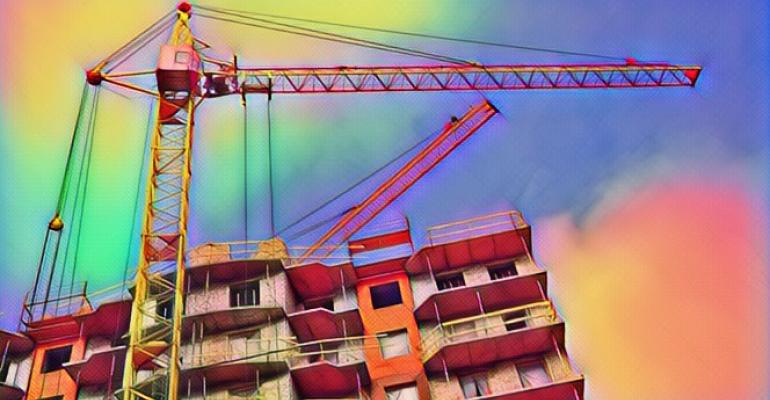Apartment building developers may finally take a breather in their rush to build new units.
“Starts will begin to slow down soon, translating into more moderate development activity by late 2020,” says Jeanette I. Rice, Americas head of multifamily research for CBRE Research.
There are still hundreds of thousands of new apartments already under construction, scheduled to open over the next year or so. But rising interest rates, rising construction costs and already tough lending standards are making it more difficult for developers to keep building at the rate they have been. Developers took out fewer permits to build new properties in September compared to previous months.
“The shift is a mild pullback, rather than an abrupt move to lesser activity,” says Greg Willett, chief economist for RealPage, a provider of property management software and services.
Strong demand for apartments has kept developers and investors interested in starting new projects despite the growing number of vacancies in many markets. Rents are still rising, even if not as quickly as they had in recent past.
“Development, just like investment, is a lower return environment than in previous cycles. But the very strong appeal of the sector makes this acceptable to market participants,” says Rice.
Fewer permits and construction starts
Developers have been taking out fewer permits to build apartment buildings. Their seasonally-adjusted annual rate of permitting has been slowing down since March 2018—shrinking to 351,000 in September 2018. That’s well below the average rate of 417,000 permits per year for 2018 so far, according to data from the U.S. Census.
“One can expect the decline in permits to translate into a decline in starts in the coming months,” says Rice.
Developers have already been starting construction on fewer new units. During their busiest year in the current cycle, they started construction on 386,000 units in 2015. That fell to 381,000 in 2016 and to 343,000 in 2017. Developers started 2018 with a flurry of new activity, but in recent months they have slowed down again. In September, they started construction on new apartments at a seasonally-adjusted annual rate of just 324,000.
Development is gradually becoming more difficult, even though developers and investors are still eager to build new apartments.
Interest rates have increased and are forecast to rise further. The 30-day LIBOR has already risen more than a percentage point in the last year, and is also forecast to go up. Lenders have been forced to pass some of that cost on to their borrowers. Banks had already toughened their lending standards earlier in the recovery. They cut back on the size of the loans they are willing to make, relative to the total cost of the project. They have also become more selective about the loans that they make, favoring existing relationships.
"The capital is more conservative on its lending practices than in prior cycles (i.e., loan-to-cost ratios, etc.), but capital is available," says Rice.
The rising cost of development is also making it more difficult to build, Rice notes. Land costs have been increasing throughout the cycle. The best suburban sites are in higher-density areas and these sites are more difficult to obtain due to their prices, as well as rising restrictions in many suburban municipalities.
The rising cost of materials and labor may also threaten planned development. Labor costs have been rising for many years and costs of certain materials are rising. “Construction costs are a wild card in the outlook,” says Willett. “For deals where the cost of materials hasn’t been locked in yet, there’s some danger that cost overruns could diminish returns.”
Demand still strong
However, strong demand for apartments has helped fill the large number of units that developers have opened so far. Apartment rents continue to grow, on average, faster than inflation.
“A combination of financial influences, housing market characteristics and lifestyle preferences make renting the right choice for lots of households,” says Willett.
Also, even if developers continue to take out fewer building permits—as they did in September—they have already started construction on many projects. “Multifamily construction activity will remain relatively high for some time yet; a multifamily project started in September 2018 would most likely be completed in 2020,” says Rice.
“Deliveries of market-rate product in the nation’s 150 largest metros now are running at about 300,000 units annually,” says Willett. “Properties already under construction point to completions holding at that annual pace at least through early to mid-2020.”

